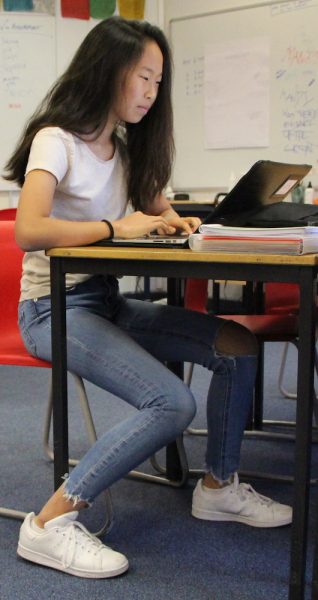There are multiple opinions on why we have a dress code, from dressing for the weather to worrying about offensive clothing.
Seventh-grader Chloe Thompson said, “We have a dress code so we are prepared for the weather and so we don’t wear offensive clothing to different cultures or people,”
Another reason students and teachers are required to abide by a dress code is the fact that they are in a work setting. According to Koshercasual, “Some people say that dress code inhibits the way they express themselves, but studies have proven that dress codes promote a more serious academic atmosphere and increases student achievement by encouraging them to focus on their studies and not on their wardrobes.” Students at ASL are not allowed to wear flip flops (for safety reasons in the science labs) and their pant tops must have a constant overlap. They have to dress ready to learn and work hard.

The teachers also have a dress code, which requires them to wear professional and respectable attire. Part of this policy includes not wearing as jeans as they are not professional. Seventh grade English teacher Mrs Tracy Steege said, “Teachers have to dress professionally but I believe that I should not have to dress very formally to gain respect from my students.”
Mr Mike Boodey, an eighth-grade teacher, said, “I used to teach at a school in the states where we could wear whatever we wanted. I wore a t-shirt and shorts. I was more relaxed (and) my students were more relaxed.”
Mr Boodey had a similar view on the dress code as Mrs Steege, claiming that these rules are not the most important thing that teachers should be thinking about.
Mr Todd Rooks, a seventh-grade teacher, took a different point of view on this topic. He talked about a hierarchy with the teachers and students and using the dress code to reinforce it. This could be shown through no jeans rule. Many students wear jeans, and if teachers wore them, they may seem to dress like students. Mr Rooks believes that this is what draws the line between the students and the teachers to differentiate them.
Everybody has different clothes in different settings. Mr Rooks said that if he could wear whatever he wants, he would wear “a button-up shirt with jeans and some tennis shoes.”
Mrs. Steege said that she would wear “jeans, a sweater and boots” to school if she was allowed to.
Of course, students would want to wear different clothes to school as well. The difficulty is just finding a way to balance this freedom of expression with the certain dress code guidelines that are in place to protect students’ safety and comfort.
